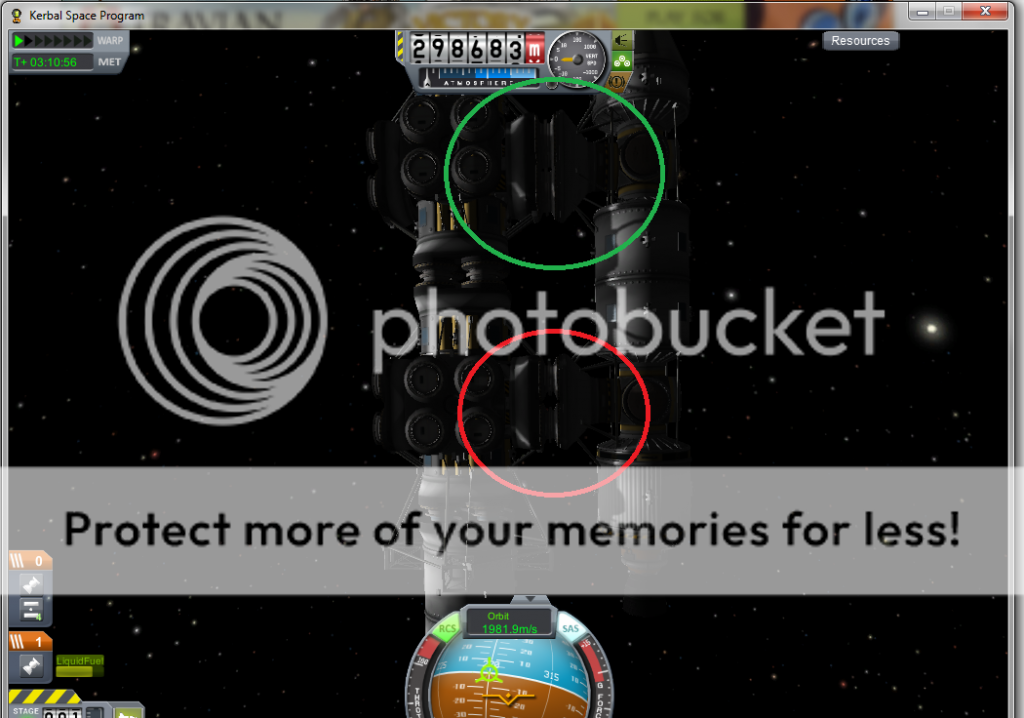One of the primary problems is that the Clamp-o-Tron ports experience a lot of flex, both when under compression or tension (i.e. forces along the axis of the port), as well as when a moment is applied at the port (i.e. a torque perpendicular to the axis centred at the port). The ports are also subject to failing under shear (i.e. a linear force perpendicular to the axis), but we won't concern ourselves with that right now.
So why is this a problem for you? Well, even if your radial ports are spaced properly between the two subsections (something I highly doubt), you can't be certain that your axial ports aren't under some force causing them to flex, in turn throwing everything out of alignment, which would then cause the ports to not dock.
Okay, let's step back for just a second and look at why people started using tri-coupling before the introduction of the Clamp-o-Tron Sr. The main issue was two-fold: first, attempting to place the port under compression (i.e. by thrusting in a planetary transfer burn) would cause a moment on the port when the axis of the subsections went out of alignment. The joint would never fail under compression, but it would quickly fail (or cause massive instability) under radial torque. Second is that putting the port under tension didn't really solve the problem either, since acceleration usually had to be limited, and many ships would have to be redesigned from the ground up to do it. The tri-coupler was devised to combat these issues since a torque would naturally occur to bring the subsections back into alignment if they ever started going out of alignment. Thrust was effectively limited only to the weakest part, and not the radial torsional strength of the port.
What allowed tri-couplers to work is that their topology shows both rotational and reflective symmetry, something I don't think your design has. I've been using tri-couplers exclusively as my example, but the same applies when using two ports to radially dock the orange tanks. You don't build 1 ship with two ports, and then try and dock another and hope they line up, you use the same design twice. That way you guarantee their alignment, something I'm just about positive you didn't do (mainly because there's no way to do that in the VAB).
Let's take a further step back, and see how we would do this in reality. The short answer is, we wouldn't. The topology of every space vehicle that has ever been docked to another to form a larger vehicle (be it a space station as a whole, a transport vehicle to a station, or two transport vehicles) is a tree. That is to say, other than by leaving the confines of the vehicle, there is one way, and only one way, to non-repetitively traverse from point A to B. The only current exceptions to these rules involve robotic arms (such as the Canadarm and Canadarm 2), and in the future may apply to a lunar or martian base by use of flexible paths between nodes. By no means will fixed path loops be used until a base matures. The reasons for not allowing loops are that it introduces multiple points of failure, and the engineering tolerances to achieve them are far to narrow for us to reliably achieve them.
Which brings me back to your problem:
TL;DR:
You were unable to achieve the required precision for the separation of your 2 sets of ports and/or overcome the issue of flex inherent to the Clamp-o-Tron docking ports. I am highly doubtful using Clamp-o-Tron Sr. ports would solve the problem either, even if you did achieve the required precision. Looking cool is about the only reason for doing this, as there is no practical reason to do so.



